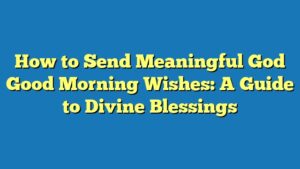By using a communication tool that enables pre-recording personal messages to be transmitted on greeting cards to the recipient upon opening, users can create a more personal and meaningful experience.
This feature offers numerous benefits, including the ability to share emotional expressions, such as love, gratitude, or sympathy, in a heartfelt and lasting way. Historically, the invention of the sound chip in the 1970s marked a significant advancement in this technology, allowing for the integration of recorded messages into greeting cards.
In this article, we will delve into the various aspects of recordable message cards, exploring their relevance, advantages, technical advancements, and societal impact.
record a message card
The key aspects of “record a message card” encompass various dimensions related to its functionality, benefits, and impact. These aspects play a crucial role in understanding the significance and utility of this communication tool.
- Personalization
- Emotional Expression
- Convenience
- Thoughtfulness
- Technological Innovation
- Versatility
- Affordability
- Accessibility
- Sentimental Value
- Cross-Generational Appeal
Recordable message cards offer a unique blend of personal touch and convenience, allowing individuals to express their emotions and well wishes in a heartfelt and lasting way. They provide a tangible and meaningful keepsake that can be cherished for years to come, fostering connections and bridging distances.
Personalization
In the realm of “record a message card,” personalization reigns supreme. It elevates the simple act of sending a greeting card into a heartfelt gesture, imbued with a unique and intimate touch. Personalization encompasses various facets that contribute to its profound impact.
-
Customized Messages
Recordable message cards allow users to record their own voices, conveying heartfelt messages that resonate deeply with recipients. These messages can be tailored to specific occasions, relationships, and emotions, creating a truly personal and unforgettable experience.
-
Unique Recordings
Unlike traditional greeting cards with pre-printed messages, recordable message cards offer the opportunity to include unique and meaningful audio content. This could include singing a favorite song, sharing a special memory, or simply expressing love and appreciation in one’s own voice.
-
Handwritten Notes
Many recordable message cards also provide space for handwritten notes, allowing users to combine the personal touch of a written message with the emotional impact of a recorded message. This dual approach creates a multi-sensory experience that is both visually and aurally engaging.
-
Personalized Artwork
Some recordable message cards feature customizable artwork or designs, enabling users to add a visual element that aligns with their personal style or the occasion being celebrated. This level of personalization further enhances the card’s uniqueness and sentimental value.
In essence, personalization is the cornerstone of “record a message card,” allowing users to create one-of-a-kind keepsakes that convey emotions, strengthen connections, and leave a lasting impression on the recipient.
Emotional Expression
Recordable message cards serve as a powerful tool for emotional expression, allowing individuals to convey deep-seated feelings that may not be easily captured in written words. This aspect lies at the heart of their enduring appeal and ability to foster meaningful connections.
-
Unveiling Inner Emotions
Recordable message cards provide a safe and intimate space for individuals to express their innermost emotions, whether it’s love, gratitude, empathy, or sympathy. The act of recording a personal message allows them to articulate their feelings with sincerity and vulnerability.
-
Bridging Distances
In an era of digital communication, recordable message cards offer a tangible and heartfelt way to bridge distances and create a sense of closeness. The recorded message carries the warmth and intonation of the sender, making the recipient feel as if they are present in the moment.
-
Preserving Special Moments
Recordable message cards become treasured keepsakes that preserve special moments and milestones. The recorded message captures the emotions and ambiance of the occasion, allowing individuals to relive those precious moments time and again.
-
Eliciting Strong Reactions
The emotional impact of recordable message cards is undeniable. The recipient’s reaction upon hearing the sender’s voice can range from laughter and tears to feelings of warmth and nostalgia. These cards have the power to evoke a wide range of emotions, leaving a lasting impression on the recipient.
In essence, recordable message cards transcend the limitations of traditional greeting cards by offering a deeply personal and emotionally resonant way to express oneself. They provide a tangible and enduring medium for conveying heartfelt messages, fostering connections, and creating lasting memories.
Convenience
In the context of “record a message card,” convenience plays a pivotal role in its widespread adoption and appeal. It offers a seamless and user-friendly experience that complements the thoughtful gesture of sending a personalized message.
One key aspect of convenience is the ease of recording and sending the message. The process is as simple as pressing a button and speaking into a microphone, eliminating the need for complex technical skills or software. This simplicity allows individuals of all ages and technical abilities to create and share their recorded messages with ease.
Another aspect of convenience lies in the flexibility and accessibility of recordable message cards. They can be purchased online or at retail stores, making them readily available to anyone who wishes to send a personalized greeting. Additionally, the cards can be sent through regular mail, ensuring that they reach their destination without the need for special delivery services.
In summary, the convenience of recordable message cards is a major contributing factor to their popularity. The ease of recording and sending messages, coupled with their widespread availability and accessibility, makes them an ideal choice for individuals seeking to convey heartfelt sentiments in a convenient and meaningful way.
Thoughtfulness
In the realm of “record a message card,” thoughtfulness takes center stage, elevating the act of sending a greeting card into a gesture of genuine care and consideration. It encompasses a multifaceted tapestry of intentions, actions, and emotions that deeply impact the recipient.
-
Personalization
Thoughtful recordable message cards are meticulously crafted with the recipient in mind. The sender takes time to choose a card that resonates with the recipient’s interests, personality, or the occasion being celebrated.
-
Customized Message
The recorded message itself is a testament to thoughtfulness. The sender carefully considers their words, expressing heartfelt sentiments and sharing meaningful anecdotes that are tailored to the recipient’s life and experiences.
-
Time and Effort
Creating a recordable message card requires time and effort, demonstrating the sender’s genuine desire to connect with the recipient. The act of recording a personal message conveys a level of care that goes beyond a simple written note.
In essence, thoughtfulness is the driving force behind recordable message cards. It manifests in the attention to detail, the heartfelt messages, and the time invested in creating a truly unique and meaningful keepsake. These cards serve as tangible expressions of love, appreciation, and well wishes, fostering deeper connections and leaving a lasting impression on the recipient’s heart.
Technological Innovation
Technological innovation has played a pivotal role in the evolution of recordable message cards, enhancing their functionality and user experience in myriad ways. These advancements have transformed the way people capture, send, and cherish personalized audio messages.
-
Voice Recording
The ability to record and store audio messages directly onto greeting cards has revolutionized the concept of personalized greetings. This innovation enables individuals to convey their heartfelt sentiments in their own voices, adding a unique and intimate touch to every card.
-
Sound Quality
Advancements in sound recording technology have significantly improved the audio quality of recordable message cards. This ensures that the recipient experiences crystal-clear sound, preserving the nuances and emotions of the spoken message.
-
Memory Capacity
Technological advancements have increased the memory capacity of recordable message cards, allowing users to record longer messages and capture more meaningful moments. This extended capacity provides greater flexibility and enables users to express themselves more fully.
-
Customization
Technological innovation has opened up possibilities for customizing recordable message cards. Users can now choose from a variety of card designs, fonts, and even add personal photos, creating truly unique and tailored keepsakes.
These technological innovations have not only enhanced the functionality of recordable message cards but have also transformed them into cherished keepsakes that capture and preserve precious memories in a tangible and enduring format.
Versatility
The versatility of recordable message cards is a key factor contributing to their widespread appeal and diverse applications. Unlike traditional greeting cards with fixed, pre-printed messages, recordable message cards offer a blank canvas for users to express their creativity and adapt to a variety of occasions and purposes.
This versatility stems from the fundamental design of recordable message cards, which allows users to record and store their own personalized audio messages. This feature opens up a world of possibilities, enabling users to tailor their messages to specific individuals, events, and sentiments. Whether it’s a heartfelt birthday wish, a romantic love note, or a comforting message of support, recordable message cards provide the flexibility to convey emotions and thoughts in a unique and meaningful way.
In practical terms, the versatility of recordable message cards extends to their diverse applications. They are not confined to traditional greeting card exchanges but can be used for various purposes, including invitations, announcements, thank-you notes, and even as a tool for storytelling and self-expression. The ability to record and share personal messages makes these cards a versatile communication tool that transcends the boundaries of conventional greeting cards.
In conclusion, the versatility of recordable message cards lies in their ability to adapt to a wide range of occasions, purposes, and user preferences. Their open-ended nature empowers users to create truly personalized and meaningful messages that resonate deeply with the recipient. This versatility makes recordable message cards a valuable tool for fostering connections, expressing emotions, and preserving special moments.
Affordability
Affordability plays a crucial role in the widespread adoption and accessibility of “record a message card” technology. The relatively low cost of producing and purchasing recordable message cards makes them an attractive option for individuals and businesses alike.
One of the key factors contributing to the affordability of recordable message cards is the advancement of digital audio technology. The miniaturization of electronic components and the development of efficient audio compression algorithms have significantly reduced the cost of recording and storing audio messages. This has enabled manufacturers to produce recordable message cards at a price point that is accessible to a wide range of consumers.
The affordability of recordable message cards has several practical applications. Firstly, it allows individuals to create personalized and meaningful greetings without breaking the bank. This is especially important for special occasions, such as birthdays, anniversaries, and holidays, when people are looking for ways to express their love and appreciation in a heartfelt way. Secondly, recordable message cards provide a cost-effective solution for businesses looking to engage with their customers in a more personal and interactive manner. They can be used to send personalized thank-you notes, promotional messages, or even customer surveys.
In conclusion, the affordability of recordable message cards is a key factor driving their popularity and versatility. It enables individuals and businesses to create and share personalized audio messages in a cost-effective manner, fostering stronger connections and enhancing communication.
Accessibility
Accessibility plays a pivotal role in the widespread adoption and usability of “record a message card” technology. It ensures that individuals with diverse abilities and circumstances can seamlessly access, interact with, and benefit from this innovative communication tool.
One of the key aspects of accessibility in the context of recordable message cards is the ease of use and simplicity of the recording process. The user interface is typically designed to be intuitive and straightforward, minimizing the need for technical expertise or assistance. This user-centric approach empowers individuals of all ages and abilities to create and share personalized audio messages with confidence.
Furthermore, recordable message cards are accessible to individuals with hearing impairments through the incorporation of visual cues and alternative modes of communication. For example, some cards feature visual indicators to signal the start and end of the recording, providing a tactile reference point for users who may not be able to rely solely on auditory cues. Additionally, the use of closed captions or transcripts can enhance the accessibility of the recorded messages for individuals who are deaf or hard of hearing.
The practical applications of understanding the relationship between accessibility and recordable message cards are far-reaching. By ensuring accessibility, manufacturers and service providers can tap into a broader market, reaching individuals who may have previously been excluded from using this technology. This inclusivity fosters a sense of belonging and empowerment, enabling everyone to participate in the joy and convenience of sending and receiving personalized audio greetings.
Sentimental Value
Within the realm of “record a message card,” sentimental value holds immense significance, transcending its functionality as a communication tool. It encapsulates the emotional attachment and cherished memories that are woven into these tangible keepsakes.
-
Nostalgia and Timelessness
Recordable message cards have the power to evoke nostalgia and provide a timeless connection to the past. The recorded messages, frozen in time, offer a tangible way to revisit special moments and relive treasured memories.
-
Preservation of Emotions
These cards serve as a sanctuary for emotions, preserving the heartfelt sentiments and unique intonations of loved ones. They capture the essence of relationships and allow individuals to cherish the emotional bonds that transcend distance and time.
-
Personalized Keepsakes
Recordable message cards become deeply personal keepsakes, imbued with the unique voices of their senders. They are not merely cards but rather intimate treasures that hold sentimental value far beyond their initial purpose.
-
Intergenerational Connections
These cards facilitate intergenerational connections, allowing individuals to share their stories, experiences, and words of wisdom with future generations. They bridge the gap between past, present, and future, fostering a sense of continuity and shared heritage.
In essence, the sentimental value of recordable message cards lies in their ability to capture and preserve precious moments, emotions, and connections. They are more than just cards; they are tangible expressions of love, friendship, and the enduring human spirit.
Cross-Generational Appeal
The cross-generational appeal of “record a message card” lies in its ability to bridge the gap between individuals of different ages and generations, fostering meaningful connections and shared experiences.
-
Bridging generational divides
Recordable message cards allow grandparents to share their wisdom and stories with grandchildren, preserving family history and traditions across generations.
-
Connecting across distances
These cards transcend physical distance, enabling families and friends to stay connected and share special moments, regardless of their location.
-
Fostering intergenerational understanding
By listening to recorded messages from loved ones of different ages, individuals gain a deeper appreciation for diverse perspectives and life experiences.
-
Preserving cultural heritage
Recordable message cards can capture and preserve cultural traditions, languages, and stories, ensuring their transmission to future generations.
In conclusion, the cross-generational appeal of recordable message cards stems from their ability to connect individuals across time and space, fostering a sense of belonging and continuity while preserving cultural heritage and promoting intergenerational understanding.
Frequently Asked Questions
This section provides answers to common questions and misconceptions about “record a message card” technology.
Question 1: What is a recordable message card?
A recordable message card is a greeting card that allows users to record and store their own personalized audio messages, which can be played back when the card is opened.
Question 2: How do I record a message on a recordable message card?
Most recordable message cards have a built-in microphone and a simple interface for recording and playback. Users typically press a button to start recording and speak into the microphone. They can then preview and save the message.
Question 3: Can I add music or other audio to my message?
Some recordable message cards allow users to add music or other audio files to their messages. This can be done by connecting the card to a computer or using a compatible app.
Question 4: How long can my recorded message be?
The maximum length of a recorded message varies depending on the specific card model and memory capacity. Some cards can store messages up to 60 seconds or more.
Question 5: Can I reuse a recordable message card?
Most recordable message cards are designed for one-time use. However, some higher-end models may allow users to erase and record new messages.
Question 6: Are recordable message cards expensive?
Recordable message cards vary in price depending on the features and quality. Basic models can be purchased for a few dollars, while more advanced cards with longer recording times and additional features may cost more.
In summary, recordable message cards offer a unique and personal way to share messages with loved ones. They are relatively easy to use and affordable, making them a popular choice for special occasions and everyday communication.
In the next section, we will explore the technical details and history of recordable message card technology.
Tips for Using Recordable Message Cards
Once you understand the importance and benefits of recordable message cards, it’s time to take action. Here are some tips to help you make the most of this innovative communication tool.
Tip 1: Choose the right card for your needs. Consider the occasion, the recipient, and the length of your message when selecting a recordable message card.
Tip 2: Practice your message beforehand. This will help you feel more confident and deliver a clear and heartfelt message.
Tip 3: Speak slowly and clearly into the microphone. This will ensure that your message is easy to understand.
Tip 4: Add personal touches to your message. Share a special memory, sing a song, or tell a joke to make your message more unique.
Tip 5: Use background music or sound effects sparingly. These can be effective in enhancing your message, but avoid using them excessively.
Tip 6: Test your message before giving the card. Make sure the recording is clear and the volume is appropriate.
Tip 7: Write a handwritten note to accompany your recorded message. This will add a personal touch and give the recipient something to keep.
Tip 8: Consider using a recordable message card for special occasions. Birthdays, anniversaries, and holidays are all great times to send a personalized message.
By following these tips, you can create and send recordable message cards that are sure to be cherished by your loved ones.
In the next section, we will explore the future of recordable message card technology and its potential impact on communication.
Schlussfolgerung
Dieser Artikel hat die vielseitigen Funktionen, Vorteile und Auswirkungen von “record a message card” untersucht. Zentrale Erkenntnisse sind die Fhigkeit, personalisierte und emotionale Botschaften zu bermitteln, die Bequemlichkeit und Zugnglichkeit sowie der sentimentale Wert und die generationsbergreifende Attraktivitt.
Diese Erkenntnisse unterstreichen die Bedeutung von “record a message card” als einem Kommunikationsmittel, das emotionale Verbindungen strkt, Entfernungen berwindet und Erinnerungen bewahrt. Da sich die Technologie weiterentwickelt, ist davon auszugehen, dass “record a message card” in Zukunft eine noch bedeutendere Rolle in unserem Leben spielen werden, indem sie neue Mglichkeiten fr persnliche und sinnvolle Interaktionen erffnen.









Tips for Using "Template by Kevin Crafts" Comments for Meaningful Online Discussions